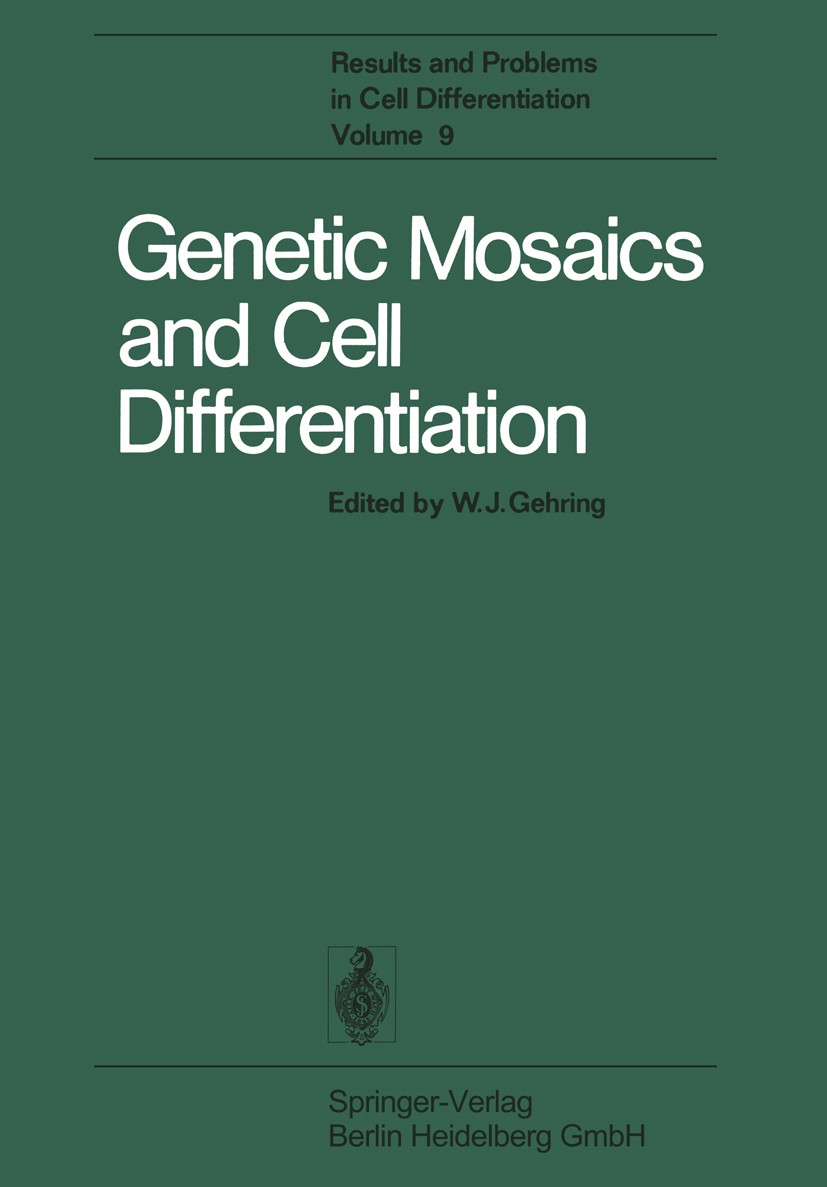| 书目名称 | Genetic Mosaics and Cell Differentiation | | 编辑 | W. J. Gehring | | 视频video | http://file.papertrans.cn/383/382560/382560.mp4 | | 丛书名称 | Results and Problems in Cell Differentiation | | 图书封面 |  | | 描述 | The relationship of cell lineage and differentiation is one of the most intriguing problems in developmental biology. In most higher organisms, the analysis of the cell lineage has to rely on indirect methods. Only in the most suitable systems, like the nematodes, can the pattern of cell division be determined by direct observation under the microscope. In cases where this is not possible, the fate of the cells has to be examined by using cell markers. Most suitable for this purpose are genetic markers, provided that they do not interfere with the developmental pathway to be studied. However, suitable genetic markers and techniques for generating genetic mosaics are available in a few organisms only. Therefore, this volume is largely concerned with Drosophila and the mouse, which have been studied most extensively. In 1929 STURTEVANT introduced the analysis of gynandromorphs into devel opmental genetics. However, this important contribution remained largely unnoticed until the late sixties, when the potential of this technique for deter mining embryonic fate maps and the number of primordial cells was exploited, and the methodology extended to the mapping of mutational foci. Mito | | 出版日期 | Book 1978 | | 关键词 | Cell; Chimäre (Biol; ); Drosophila; Endoplasmatisches Reticulum; Gynandromorphismus; Mosaizismus; Zelldiffe | | 版次 | 1 | | doi | https://doi.org/10.1007/978-3-540-35803-9 | | isbn_softcover | 978-3-662-21952-2 | | isbn_ebook | 978-3-540-35803-9Series ISSN 0080-1844 Series E-ISSN 1861-0412 | | issn_series | 0080-1844 | | copyright | Springer-Verlag Berlin Heidelberg 1978 |
The information of publication is updating

|
|
 |Archiver|手机版|小黑屋|
派博传思国际
( 京公网安备110108008328)
GMT+8, 2025-12-18 02:09
|Archiver|手机版|小黑屋|
派博传思国际
( 京公网安备110108008328)
GMT+8, 2025-12-18 02:09


